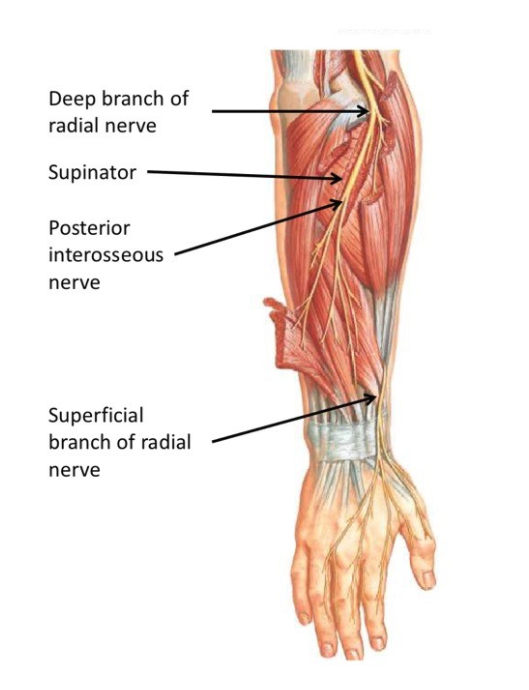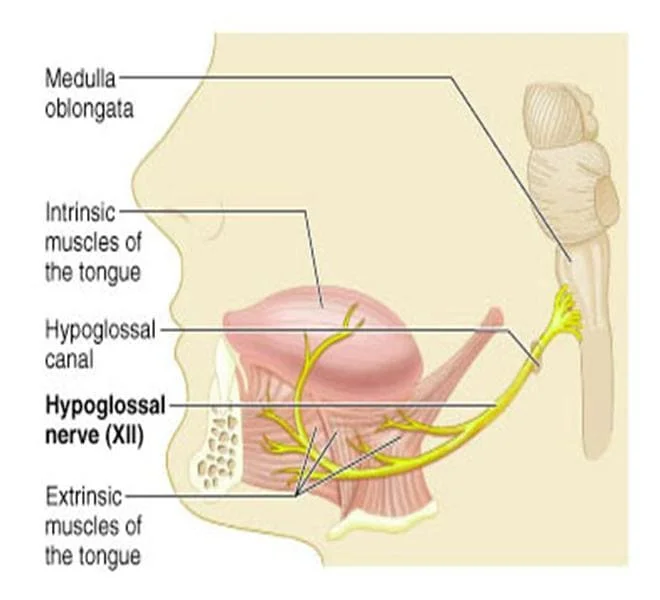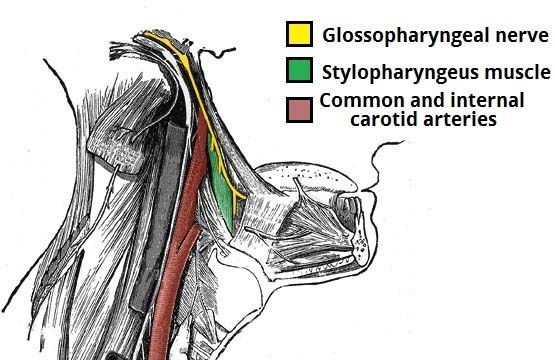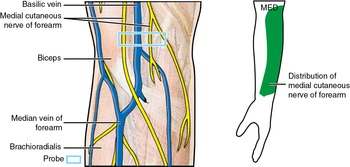Deep Branch of Radial Nerve
Deep Branch of Radial Nerve Anatomy
Origin and Course
At the cubital fossa, the radial nerve splits into a superficial (sensory) and deep (motor) branch. The deep branch of the radial nerve extends downhill between the superficial and deep layers of muscles to the center of the forearm after winding around the lateral side of the radius between the fibers of the supinator muscle. The extensor muscles of the hand, which make up the majority of the muscles in the posterior compartment of the forearm, get motor activity from the deep branch.
The brachial plexus’s posterior chord is where the radial nerve emerges. The radial nerve is eventually generated from the anterior rami of C5 to T1 according to the posterior cord’s ability to receive nerves from the upper, lower, and middle trunk.
Clinical Significance
Because it travels through the axilla, the radial nerve is vulnerable to damage. Crutch paralysis can occur when it is crushed by the humerus when using crutches. The flexion of the fingers, hand, and wrist is known as “wrist drop” and is a common sign of injury to the deep branch of the radial nerve because the extensor muscles it supplies are paralyzed. Since this nerve solely provides a sensory function to the ligaments and articulations of the carpal and metacarpal joints, normal skin sensation is preserved.
The nerve is vulnerable to traction or compression damage when the elbow joint is hurt, especially radial dislocation because it travels dorsally around the head of the radius. The arcade of Frohse, a fibrous arch created from the proximal portion of the superficial head of the supinator, under which the deep branch of the radial nerve travels, is another place where entrapment could occur. The size of the nerve channel varies. By releasing this fibrous band, nerve function was sometimes restored in instances of spontaneous paralysis.
It descends as the posterior interosseous nerve and is noticeably smaller.
According to some authors, the posterior interosseous nerve and the deep branch of the radial nerve are synonyms.
FAQs
What is the deep branch of the radial nerve?
The posterior interosseous nerve, or deep branch of the radial nerve, is exclusively motor. It starts anterior to the lateral epicondyle of the humerus and travels through the two heads of the supinator before curving around the lateral and posterior sides of the radius as it reaches the posterior compartment of the forearm.
What are the deep and superficial branches of the radial nerve?
The radial nerve splits into two branches: a superficial branch that innervates the dorsum (rear) of the hand and a deep branch that develops into the posterior interosseous nerve.
What does the deep branch of the radial nerve pierce?
Supinator muscle
The supinator muscle is pierced by the deep branch of the radial nerve, which is now known as the posterior interosseous nerve.
What is the deep branch of the radial nerve C7 C8?
Posterior interosseous nerve
The deep branch of the radial nerve continues after it enters the supinator muscle as the posterior interosseous nerve, also referred to as the dorsal interosseous nerve. The majority of the muscles in the forearm’s posterior compartment are supplied by this nerve, which carries fibers from the C7 and C8 spinal nerves.






